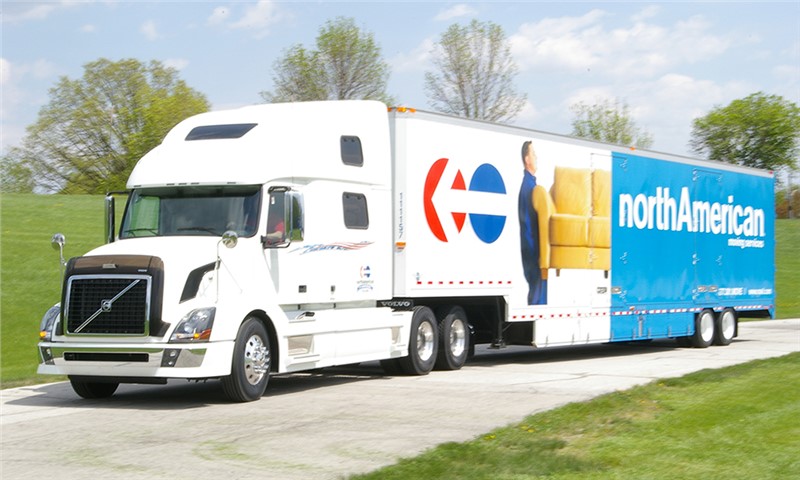Moving to a new home is an exciting chapter in anyone’s life, but it often comes with the heavy burden of stress, confusion, and disorganization. For many, the thought of packing up an entire household and transporting it to a new location can seem overwhelming. However, mastering the art of planning can transform what feels like a monumental task into a streamlined and manageable experience.
Effective planning is the backbone of any successful move. It allows you to anticipate potential issues, reduce stress, and ensure that the transition to your new home is as smooth as possible. This guide will walk you through the essential steps in the moving process, providing actionable insights that will help you plan each phase with precision and confidence.
Step 1: Set Your Moving Date and Budget
Before diving into the details of your move, it’s crucial to establish two key pillars: your moving date and your budget. These factors will influence every other decision you make, from hiring movers to packing materials and timing.
Moving Date:
Selecting your moving date should be your first priority. If you’re working with professional movers, securing a date that fits their availability is essential. Keep in mind that certain times of the year—especially weekends, holidays, and summer months—tend to be busier for moving companies. If possible, opt for weekdays or off-peak seasons, which can offer both availability and cost savings.
Budget:
A realistic budget is equally important. Moving costs can vary depending on a number of factors: the distance between your old and new homes, whether you’re hiring professional movers or renting a truck, the size of your household, and the need for storage. Establish a budget that accounts for all these potential costs and includes a contingency for unexpected expenses.
A well-defined budget will guide you in making informed decisions about hiring movers, purchasing packing supplies, or even deciding between DIY and professional moving services.
Step 2: Research and Hire Moving Services (If Necessary)
Once you have your moving date and budget in place, the next step is deciding whether you will handle the move yourself or hire professional movers. While some prefer the DIY route to save money, others opt for the convenience of professional moving services.
Do-It-Yourself Move:
If you’re planning to rent a truck and move on your own, research rental companies to compare prices and services. Look for companies that offer adequate vehicle sizes for your needs, and make sure to reserve your truck well in advance to avoid last-minute availability issues. Don’t forget about additional equipment such as dollies, blankets, and straps to secure your items.
Hiring Professional Movers:
Hiring a moving company offers the convenience of professional help, but it also comes with its own set of challenges. First, do thorough research on reputable moving companies. Look at online reviews, ask for recommendations, and request quotes from at least three different companies. Verify that the movers are licensed and insured, and ask about any additional fees or services they may charge for. Finally, review the company’s policy on cancellations, delays, and damage to your belongings. Once you’ve made your decision, confirm all details in writing.
Whether you’re going the DIY route or hiring professionals, securing your moving services early on ensures that the rest of your planning can proceed smoothly.
Step 3: Organize and Declutter
Before you start packing, it’s essential to take stock of what you’re moving. Moving is the perfect opportunity to declutter your home and reduce the volume of items you’ll need to transport. Organize your belongings into categories: what you’re keeping, what you’re donating, and what needs to be sold or thrown away.
A successful decluttering session should involve:
-
Sorting through closets, drawers, and storage spaces: Start with items you use the least. Sort them into keep, donate, sell, or discard piles.
-
Holding a garage sale: If you have valuable items to sell, a garage sale or an online marketplace can help lighten your load while generating extra cash.
-
Donating: Many charitable organizations accept gently used furniture, clothing, and household goods. Schedule a donation pickup or drop-off ahead of time.
By taking the time to declutter, you not only save time and energy when packing, but you also reduce moving costs. The fewer items you have, the less you’ll spend on truck rental, packing materials, and labor.
Step 4: Begin Packing (Well in Advance)
Once you’ve tackled the decluttering process, it’s time to start packing. Packing is often the most time-consuming aspect of the moving process, but with proper planning, it can be manageable and even efficient.
Start Early:
The key to successful packing is starting as early as possible. Aim to begin packing non-essential items at least two weeks before your move. Begin with items that you use least often—such as seasonal decorations, books, or spare kitchenware. Leave everyday essentials for last, but ensure that everything is packed and ready by the day before the move.
Pack Smart:
-
Use the right materials: Invest in high-quality packing supplies, such as sturdy boxes, bubble wrap, packing paper, and tape. Avoid using old, flimsy boxes that might break or collapse during transit.
-
Label each box: Clearly label boxes with the contents and the room they belong to in your new home. This will make unloading and unpacking much easier.
-
Protect fragile items: Use bubble wrap or packing peanuts for fragile items. For furniture, consider disassembling large pieces to make them easier to transport.
Pack an Essentials Box:
In the chaos of moving, it’s easy to forget the things you’ll need on the first day in your new home. Pack an “essentials box” with items like toiletries, medications, cleaning supplies, important documents, a change of clothes, and basic kitchen items (coffee maker, mugs, etc.). This will help you settle in while you unpack everything else.
Step 5: Confirm and Finalize Details
As your moving day approaches, it’s essential to confirm all logistical details. Reconfirm the date and time with your moving company, whether professional or DIY. If you’re moving into an apartment or a building with restricted access, check in with building management to ensure the moving truck can park close to the entrance. Make arrangements for childcare or pet care if needed on moving day.
Also, don’t forget to:
-
Transfer utilities: Ensure that your electricity, water, gas, and internet are set up in advance at your new home, and schedule disconnections at your current residence.
-
Change your address: Notify the post office of your address change and update your address with banks, credit card companies, and subscription services.
-
Clean your old home: Before leaving, give your old place a thorough cleaning, especially if you’re renting and need to get your deposit back.
Step 6: Moving Day and Unpacking
On moving day, be prepared to supervise the movers (or gather your helpers) and ensure that everything goes according to plan. Make sure each item is carefully loaded and labeled to avoid confusion during unloading.
Once you arrive at your new home, start by unloading the essentials box and setting up basic living areas—such as the kitchen, bedroom, and bathroom. Unpack methodically, starting with the most necessary items and working your way to the less essential items. Don’t rush; unpacking can take time, and it’s important to approach it with patience.
Conclusion
Mastering the planning phase of your move is the key to ensuring a smooth, stress-free experience. By following this step-by-step guide, you can approach your move with clarity, confidence, and a solid game plan. Starting early, staying organized, and anticipating challenges will allow you to focus on the excitement of your new home rather than getting bogged down by logistical hiccups. The effort you put into planning will pay off in a seamless transition, setting the stage for a fresh start in your new space.




